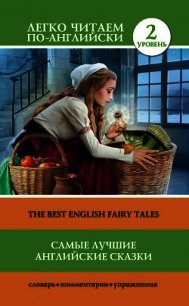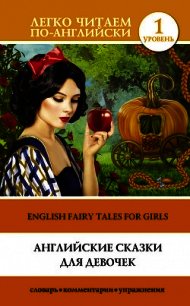More English Fairy Tales - Jacobs Joseph (книги бесплатно читать без .txt) 📗
XLVIII. THE BLACK BULL OF NORROWAY
Source.—Chambers’s Popular Rhymes of Scotland, much Anglicised in language, but otherwise unaltered.
Parallels.—Chambers, l.c., gave a variant with the title “The Red Bull o’ Norroway.” Kennedy, Legendary Fictions, p. 87, gives a variant with the title “The Brown Bear of Norway.” Mr. Stewart gave a Leitrim version, in which “Norroway” becomes “Orange,” in Folk-Lore for June, 1893, which Miss Peacock follows up with a Lincolnshire parallel (showing the same corruption of name) in the September number. A reference to the “Black Bull o’ Norroway” occurs in Sidney’s Arcadia, as also in the Complaynt of Scotland, 1548. The “sale of bed” incident at the end has been bibliographised by Miss Cox in her volume of variants of Cinderella, p. 481. It probably existed in one of the versions of Nix Nought Nothing (No. vii.).
Remarks.—The Black Bull is clearly a Beast who ultimately wins a Beauty. But the tale as is told is clearly not sufficiently motivated. Miss Peacock’s version renders it likely that a fuller account may yet be recovered in England.
XLIX. YALLERY BROWN
Source.—Mrs. Balfour’s “Legends of the Lincolnshire Fens,” in Folk-Lore, ii. It was told to Mrs. Balfour by a labourer, who professed to be the hero of the story, and related it in the first person. I have given him a name, and changed the narration into the oblique narration, and toned down the dialect.
Parallels.—“Tiddy Mun,” the hero of another of Mrs. Balfour’s legends (l.c., p. 151) was “none bigger ’n a three years old bairn,” and had no proper name.
Remarks.—One might almost suspect Mrs. Balfour of being the victim of a piece of invention on the part of her autobiographical informant. But the scrap of verse, especially in its original dialect, has such a folkish ring that it is probable he was only adapting a local legend to his own circumstances.
L. THE THREE FEATHERS
Source.—Collected by Mrs. Gomme from some hop-pickers near Deptford.
Parallels.—The beginning is a la Cupid and Psyche, on which Mr. Lang’s monograph in the Carabas series is the classic authority. The remainder is an Eastern tale, the peregrinations of which have been studied by Mr. Clouston in his Pop. Tales and Fictions, ii., 289, seq. The Wright’s Chaste Wife is the English fabliau on the subject. M. Bedier, in his recent work on Les Fabliaux, pp. 411-13, denies the Eastern origin of the fabliau, but in his Indiaphobia M. Bedier is capable de tout. In the Indian version the various messengers are sent by the king to test the chastity of a peerless wife of whom he has heard. The incident occurs in some versions of the “Battle of the Birds” story (Celtic Fairy Tales, No. xxiv.), and considering the wide spread of this in the British Isles, it was possibly from this source that it came to Deptford.
LI. SIR GAMMER VANS
Source.—Halliwell’s Nursery Rhymes and Tales.
Parallels.—There is a Yorkshire Lying Tale in Henderson’s Folk-Lore, first edition, p. 337, a Suffolk one, “Happy Borz’l,” in Suffolk Notes and Queries, while a similar jingle of inconsequent absurdities, commencing “So he died, and she unluckily married the barber, and a great bear coming up the street popped his head into the window, saying, ’Do you sell any soap’?” is said to have been invented by Charles James Fox to test Sheridan’s memory, who repeated it after one hearing. (Others attribute it to Foote.) Similar Lugenmarchen are given by the Grimms, and discussed by them in their Notes, Mrs. Hunt’s translation, ii., pp. 424, 435, 442, 450, 452, cf. Crane, Ital. Pop. Tales, p. 263.
Remarks.—The reference to venison warrants, and bows and arrows seems to argue considerable antiquity for this piece of nonsense. The honorific prefix “Sir” may in that case refer to clerkly qualities rather than to knighthood.
LII. TOM HICKATHRIFT
Source.—From the Chap-book, c. 1660, in the Pepysian Library, edited for the Villon Society by Mr. G.L. Gomme. Mr. Nutt, who kindly abridged it for me, writes, “Nothing in the shape of incident has been omitted, and there has been no rewriting beyond a phrase here and there rendered necessary by the process of abridgment. But I have in one case altered the sequence of events putting the fight with the giant last.”
Parallels.—There are similar adventures of giants in Hunt’s Cornish Drolls. Sir Francis Palgrave (Quart. Rev., vol. xxi.), and after him, Mr. Gomme, have drawn attention to certain similarities with the Grettir Saga, but they do not extend beyond general resemblances of great strength. Mr. Gomme, however, adds that the cartwheel “plays a not unimportant part in English folk-lore as a representative of old runic faith” (Villon Soc. edition, p. xv.).
Remarks.—Mr. Gomme, in his interesting Introduction, points out several indications of considerable antiquity for the legend, various expressions in the Pepysian Chap-book (“in the marsh of the Isle of Ely,” “good ground”), indicating that it could trace back to the sixteenth century. On the other hand, there is evidence of local tradition persisting from that time onward till the present day (Weaver, Funerall Monuments, 1631, pp. 866-7; Spelman, Icenia, 1640, p. 138; Dugdale, Imbanking, 1662 (ed. 1772, p. 244); Blomefield, Norfolk, 1808, ix., pp. 79, 80). These refer to a sepulchral monument in Tylney churchyard which had figured on a stone coffin an axle-tree and cart-wheel. The name in these versions of the legend is given as Hickifric, and he is there represented as a village Hampden who withstood the tyranny of the local lord of the manor. Mr. Gomme is inclined to believe, I understand him, that there is a certain amount of evidence for Tom Hickathrift being a historic personality round whom some of the Scandinavian mythical exploits have gathered. I must refer to his admirable Introduction for the ingenious line of reasoning on which he bases these conclusions. Under any circumstances no English child’s library of folk-tales can be considered complete that does not present a version of Mr. Hickathrift’s exploits.
LIII. THE HEDLEY KOW
Source.—Told to Mrs. Balfour by Mrs. M. of S. Northumberland. Mrs. M.’s mother told the tale as having happened to a person she had known when young: she had herself seen the Hedley Kow twice, once as a donkey and once as a wisp of straw. “Kow” must not be confounded with the more prosaic animal with a “C.”
Parallels.—There is a short reference to the Hedley Kow in Henderson, l.c., first edition, pp. 234-5. Our story is shortly referred to thus: “He would present himself to some old dame gathering sticks, in the form of a truss of straw, which she would be sure to take up and carry away. Then it would become so heavy that she would have to lay her burden down, on which the straw would become ’quick,’ rise upright and shuffle away before her, till at last it vanished from her sight with a laugh and shout.” Some of Robin Goodfellow’s pranks are similar to those of the Hedley Kow. The old woman’s content with the changes is similar to that of “Mr. Vinegar.” An ascending scale of changes has been studied by Prof. Crane, Italian Popular Tales, p. 373.


